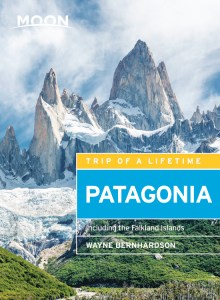3 Classic Patagonia Road Trip Routes
Because of Patagonia’s vast expanses, overland travel tends to be for those with plenty of time. Most routes are well served by reasonably priced public transportation, but renting a vehicle can be more efficient. A 4WD vehicle is rarely necessary, but a high-clearance vehicle can be worth the extra bucks.

Parallel to RN 3, the mother of all Argentine roads is RN 40, from the Bolivian border in Jujuy province to the Chilean border in Patagonia’s Santa Cruz province. It’s in Patagonia, though, that RN 40 has acquired an international reputation as the adventurous route between the northern lakes and southern glaciers. Only in the last few years has there been any semiregular public transportation on the route from Bariloche to El Calafate. The southern segment from the town of Perito Moreno to El Calafate is in the process of being fully paved, but parts of any trip south of Río Mayo still seem like an expedition. Travelers should be prepared for several days’ rugged travel, or weeks, if they want to explore off the main route.
Coastal RN 3 is entirely paved (though discontinuous), and parts of the connector roads through Chilean Tierra del Fuego remain unsurfaced. Still, RN 3 glows with the charisma of the world’s southernmost highway, the Patagonian road that leads from Buenos Aires to Tierra del Fuego’s tip. To grasp the vastness that so impressed early European visitors, and to view prodigious wildlife concentrations, “Ruta Tres” is still a matchless itinerary.
The following section suggests week-long itineraries that can be combined to explore this intriguing region for a longer period, up to 15 days or ideally more. Unfortunately, drop-off charges for rental vehicles are expensive except at the point of rental.
Day 1
Whichever route you choose, begin by arriving at Aeropuerto Internacional Ministro Pistarini (Ezeiza) and transfer to a Buenos Aires hotel, leaving the afternoon free for sightseeing. Get a good night’s sleep before beginning the road trip of a lifetime.
The Northern Coast
Best for those with limited time and flexibility, this segment is logistically simpler and close to major airports with plenty of other services including rental cars.
Day 2
Take a morning flight to Trelew and transfer north on RN 3 to the coastal city of Puerto Madryn (an hour’s drive). Make an afternoon visit to the Ecocentro Puerto Madryn, an environmental museum. This leaves time for the beach, more active pursuits such as diving or windsurfing, or even an excursion to Área Natural Protegida Punta Loma, which has a big sea lion colony and many seabirds.
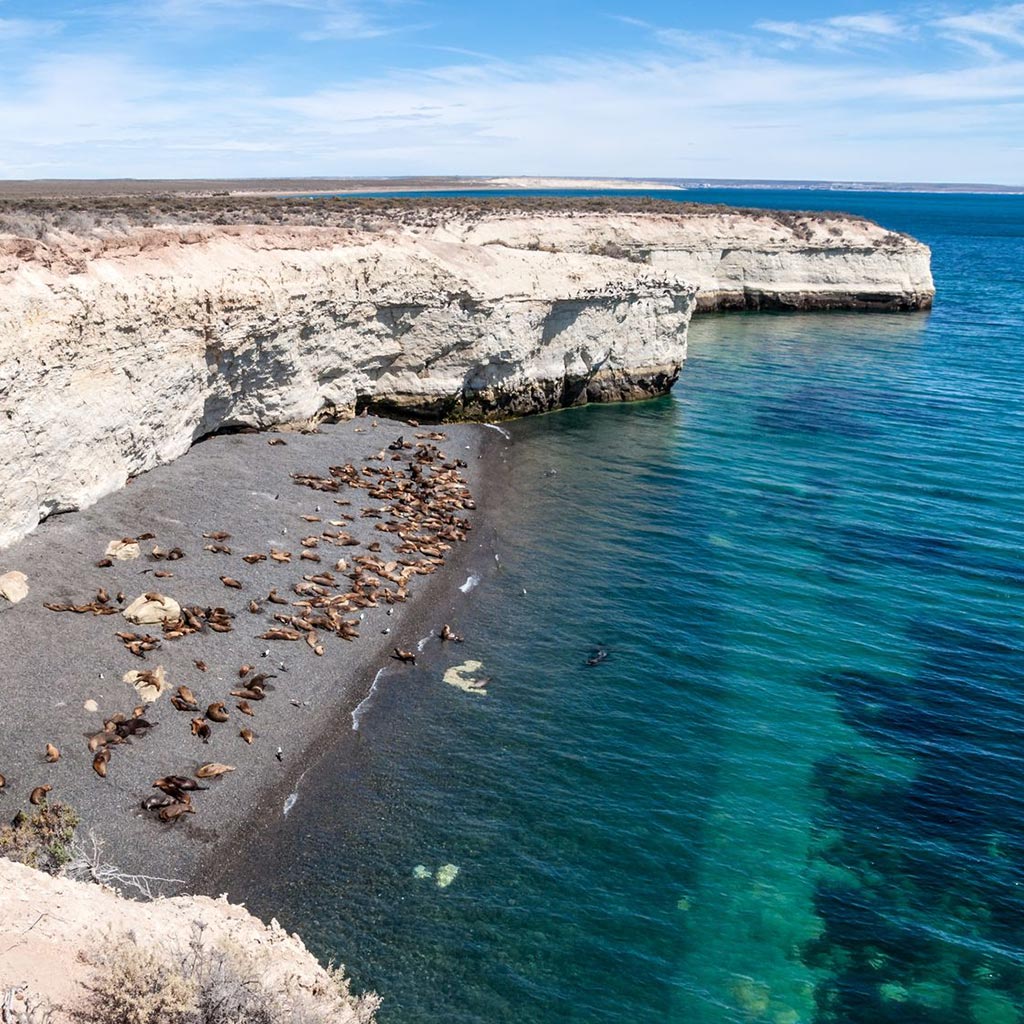
Day 3
It’s barely an hour’s drive to Península Valdés. Spend the full day viewing wildlife, including elephant seals, penguins, orcas, or right whales (depending on season), as well as guanacos, rhea, and sea lions (present all year). Consider a night at one of the peninsula’s accommodations, such as Estancia Rincón Chico.
Day 4
Depart in the morning, heading south on RN 3 back to Trelew (1 hour’s drive) to visit Museo Paleontológico Egidio Feruglio, a state-of-the-art paleontology museum, followed by a badlands hike through the in situ paleontological park at Bryn Gwyn, near Gaiman. Enjoy a late afternoon Welsh tea and overnight at Gaiman.
Newsletter Signup
By clicking ‘Sign Up,’ I acknowledge that I have read and agree to Hachette Book Group’s Privacy Policy and Terms of Use
Days 5–6
From Gaiman, make an eastbound lateral from RN 3 to Punta Tombo (about 150 kilometers, roughly 2 hours). Its massive Magellanic penguin colony is the continent’s largest. After exploring Punta Tombo, drive along the desolate but scenic coastline past Cabo Raso to isolated Camarones (about 150 kilometers, 3 hours) for lunch. Continue onward to Bahía Bustamante (140 kilometers, 2.5 hours) for accommodations and excursions to offshore islands or a nearby petrified forest. From here, it’s possible to return to Trelew (roughly 250 kilometers, about 4 hours) and fly back to Buenos Aires.
Travelers with more time can continue south on RN 3 to Comodoro Rivadavia (roughly 200 kilometers, 3 hours) to tour the Southern Coast.
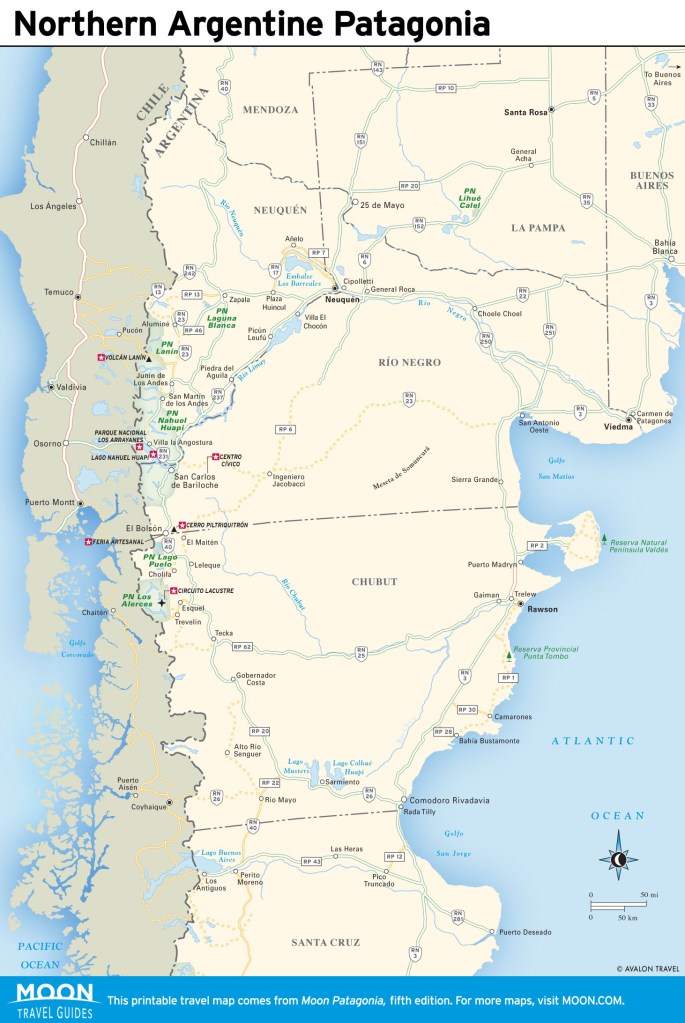
The Southern Coast
Day 2
Fly from Buenos Aires to Comodoro Rivadavia. Make a brief stop at its first-rate Museo Nacional del Petróleo, before continuing along smoothly paved highway to picturesque Puerto Deseado (300 km, 3.5 hours) and its unique estuary, the Reserva Natural Provincial Ría Deseado. Take a short excursion on the Ría Deseado, home to penguins, cormorants, many other seabirds, and especially dolphins. Spend the night at Deseado.
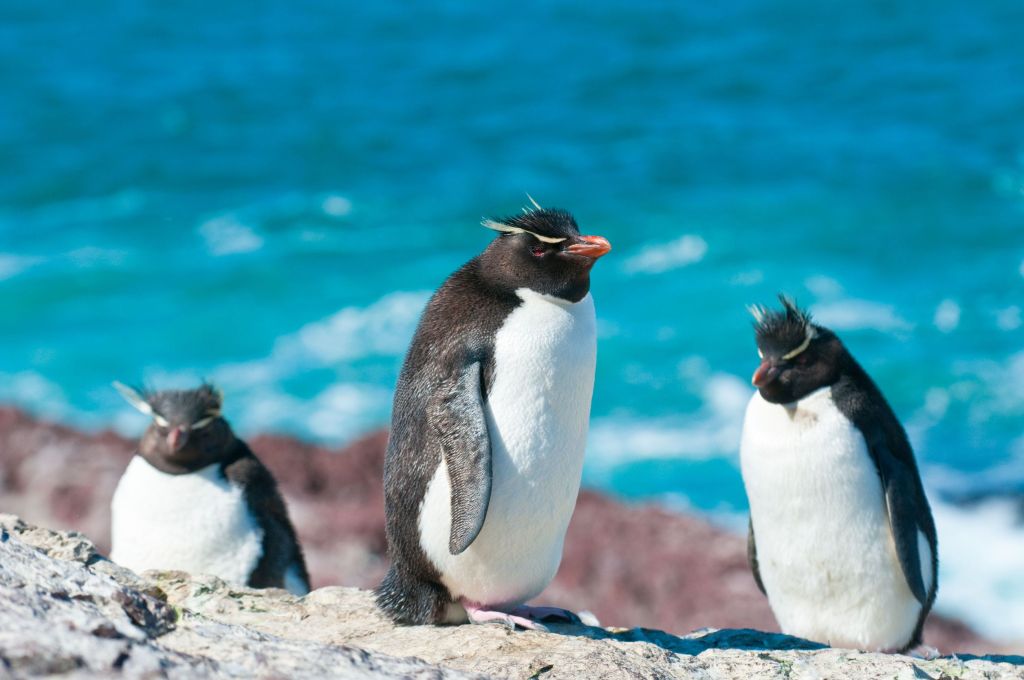
Day 3
Sea conditions permitting, sail to offshore Isla Pingüino, site of the world’s northernmost rockhopper colony, along with Magellanics and many sea lions. Spend the night at Deseado or, if there’s enough daylight, continue south via RN 281 and RN 3 to Puerto San Julián (about 380 km, five hours). Its harbor and offshore islands are also home to large populations of dolphins and Magellanic penguins. Spend the night in San Julián.
Day 4
Continue south on RN 3 to the stunning headlands of Parque Nacional Monte León (150 km, roughly 2.5 hours), a short detour off the main road. Before leaving the highway, check tide tables at the park visitors center in order to be able to walk the beach, enter the sea caves, and approach the cormorant-covered Isla Monte León. Camp at the park or find accommodations in the nearby town of Comandante Luis Piedra Buena.
Days 5–6
Departing in the morning or afternoon, head south on RN 3 to Río Gallegos (200 km, 3 hours). Find accommodations in town or at Estancia Monte Dinero, near the large Magellanic penguin colony at Reserva Provincial Cabo Vírgenes, the easternmost point of the Strait of Magellan. From Gallegos, it’s possible to fly back to Buenos Aires.
Travelers with more time can continue onward to tour the Andes. Start on RN 3, then turn onto RP 5, which becomes contiguous with RP 40 at Esperanza until the junction with RP 11 east to El Calafate.
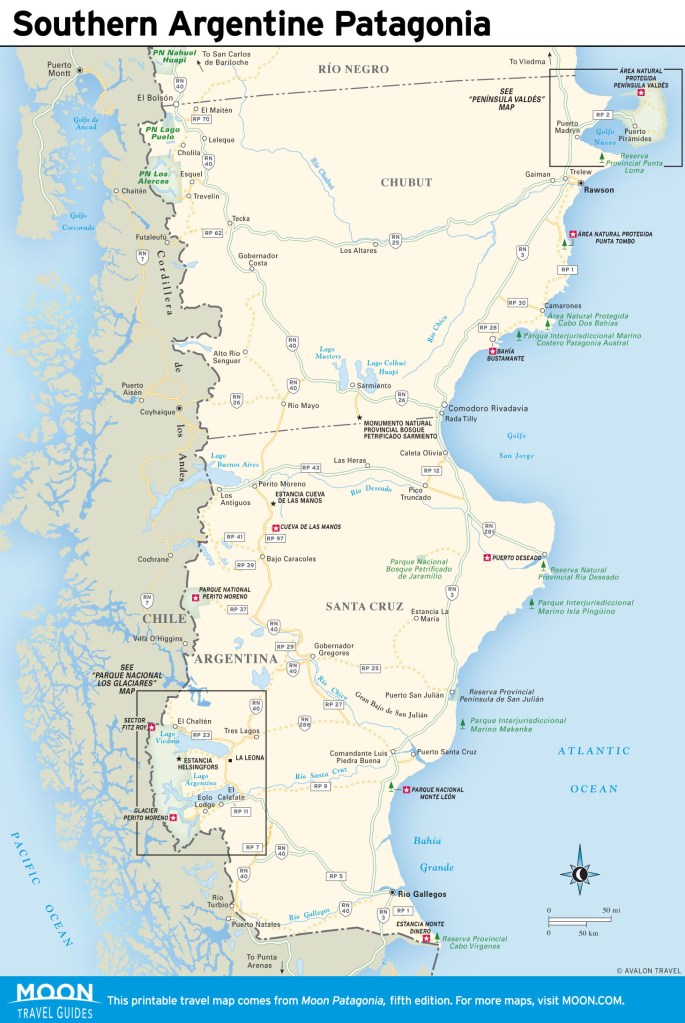
The Andes
Days 2–3
From Buenos Aires, fly to El Calafate, gateway to Parque Nacional Los Glaciares. Time permitting, visit a working estancia (ranch). Otherwise, dine at one of El Calafate’s fine restaurants. The following morning, begin a full-day overland excursion to the Glaciar Perito Moreno in Parque Nacional Los Glaciares. Overnight in El Calafete.
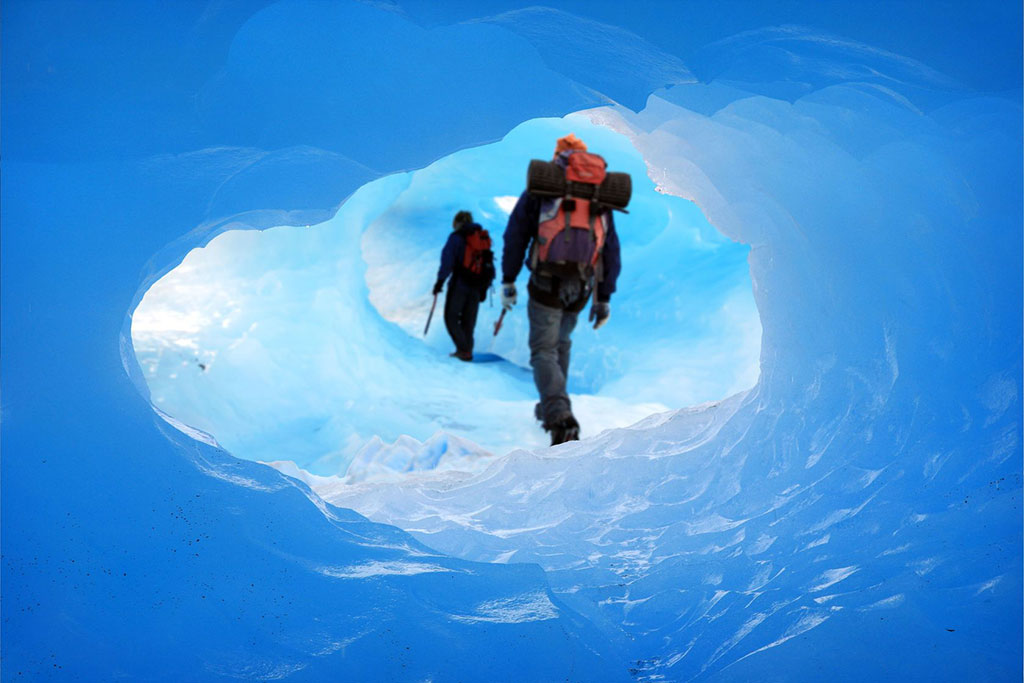
Days 4–6
East of El Calafate, take the excellent paved northbound RN 40 and then westbound RP 23, to El Chaltén (about 250 kilometers, 3-4 hours) in Sector Fitz Roy of Parque Nacional Los Glaciares. With an early arrival and good weather, there’s time for a swift hike to view Cerro Torre’s namesake glaciated needle. Find accommodations in or near town.
The following day, plan on a demanding full-day hike to Laguna de los Tres, for views of Cerro Fitz Roy. On the next day, do another hike to Loma del Pliegue Tumbado for its panoramas of Fitz Roy. Return to El Calafate for the flight back to Buenos Aires.
Patagonia’s staggering landscapes, titanic glaciers, and rugged mountains evoke mystery and inspire self-discovery. Explore the ends of the earth with Moon Patagonia.
Newsletter Signup
By clicking ‘Sign Up,’ I acknowledge that I have read and agree to Hachette Book Group’s Privacy Policy and Terms of Use
Pin For Later


